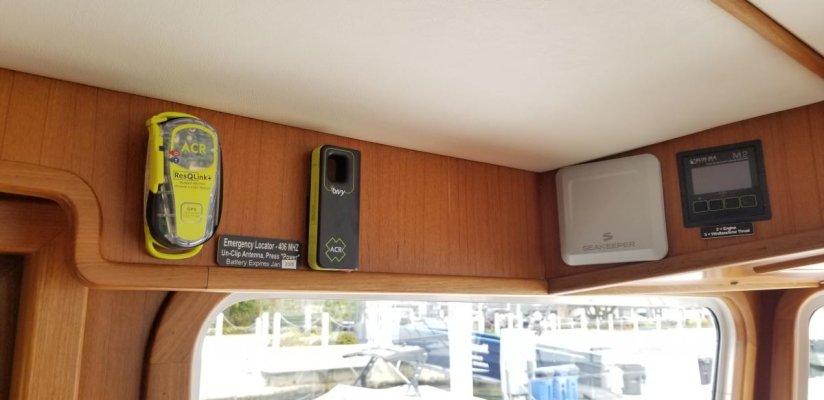It’s been over 20 years since I cruised, things have changed a lot!
Back then I had a fixed GPS on my sailboat, pretty much the only choice.
I now have a small trailer trawler (SeaPiper) and plan to do some coastal cruising and Dry Tortugas, stuff like that. I plan to get some sort of EPIRB and am looking for thoughts on what to get.
A fixed one can work, but what about the personal ones? Should we each have a personal one, just a fixed one, all 3 or? I’m not sure just how the personal ones work.
Any thoughts are appreciated.
My advice is get a PLB for coastal (and near coastal) cruising. All the other communications devices (Inreach, Go, sat phone, etc) have their benefits but you should have a simple, on/off emergency device to call the cavalry if needed. You don’t need to be screwing around with texting, pairing devices, deciding who to contact, etc, if your boat is on fire or taking on water.
The significant differences with an EPIRB are that they can be self activating if submerged, and have extended battery life when activated. I don’t remember the activation battery life, but its something like 72 hrs min, instead of 24hrs for the PLB. If you are in any coastal US areas (including Dry Tortugas), it won’t take 24hrs to get SAR attention. Most coastal cruising areas have some sort of help available within minutes or hours. If you have an emergency, get the word out by radio and all means available, and your most likely help will be from another boat. The PLB is your safety signal in case everything else goes bad.
Bigger boats can have EPIRBs hard mounted on the boat, often in addition to PLBs. You are usually better off having your EPIRB/PLB in your ditch bag, so it goes with you if you have to abandon ship. You also don’t have to go looking for it if you need to activate due to fire, sinking, etc. EPIRBs shine if you are way offshore or otherwise possibly days away from rescue.
We have both on our boat, but we go to pretty desolate areas regularly. We take the PLB with us when on big hikes, dinghy trips etc if we are not near civilization.
One unsolicited tip for anyone that may have a serious emergency, try to send out more than one form of request for help. The coast guard gets accidental activations of emergency equipment frequently enough that they (at least in populated areas) will wait to confirm an emergency before initiating assistance. If you are sinking or burning and no help is near, activate multiple devices so there is no doubt that you need help. They radio should be primary since so much more info is transmitted, but I’m assuming your radio may be non-op or out of range when all goes bad.
Good luck out there. I hope none of us every need this stuff.

